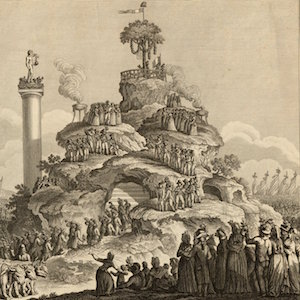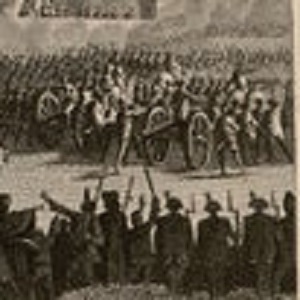Culture

Vending Machine
In the United States coin-operated drink machines - generically called "coke machines" - are ubiquitous consumer objects regularly punctuating our everyday landscapes. We feed them our money and out roll individually packaged liquid refreshments.
Oh Richard, Oh, My King!
This aria from the Gretry opera, Richard the Lion–Hearted, was adopted by royalists during the early years of the French Revolution. The song’s accusation that the king had been abandoned by all but his most devoted followers made it a suitable counter–revolutionary anthem.
It’ll Be Okay
Popular during the early years of the French Revolution, this song’s lively tune and repetitive chorus expressed revolutionaries’ hopefulness about the future. Singers manipulated its malleable lyrics to address a broad range of topical issues.
Hymn of 9 Thermidor
This hymn commemorates the overthrow of Robespierre and the Committee of Public Safety by the men of the National Convention during the French Revolution. It had its debut performance on the first anniversary of that event (27 July 1795).
Hymn of 21 January
With lyrics drawn from a Republican Ode composed by the revolutionary poet Lebrun in 1793, this hymn commemorates the execution of France's Louis XVI.
Hymn for the Festival of Marriage
Although festivals drew much smaller audiences during the final years of the Revolution, the government continued to celebrate them. Now, however, they tended to commemorate apolitical events: thus a festival, and hymn, devoted to the subject of marriage.

View of the Mound of Champ de la Reunion
In this watercolor of the Festival of the Supreme Being, we see a procession that includes a woman wearing a Phrygian cap paraded past a statue of Hercules holding two smaller statues of Liberty and Equality, towards a Liberty tree, atop the hill.

Scene of Directory Life, Men and Women from L’Optique du Jour
After Jacobin control faded, with its repression of exuberant social life as well as political diversity, the following years saw a rebirth of open pleasures. This image focuses on fashionable men and women enjoying the good life.

Return from Varennes, Arrival of Louis Capet in Paris
Following his arrest, Louis and his family are returned to Paris. Large, silent crowds looked on disapprovingly.

Louis XVI Stopt in his Flight at Varennes
This romantic English painting of the King’s flight suggests only a few feet separated the King from escape.